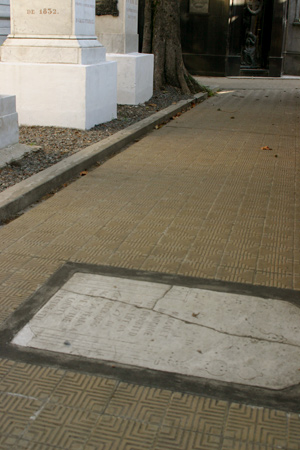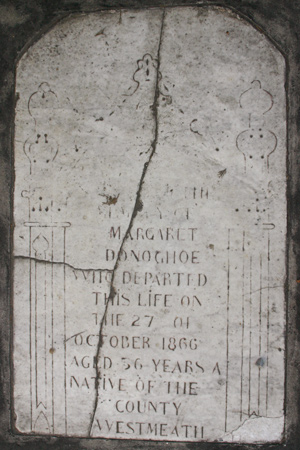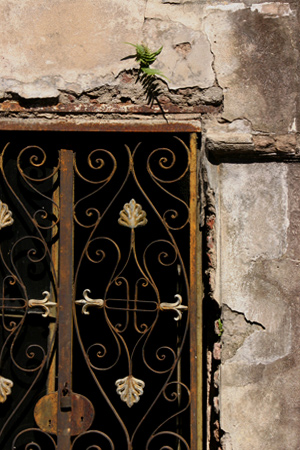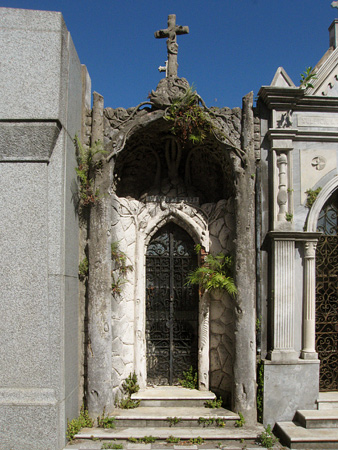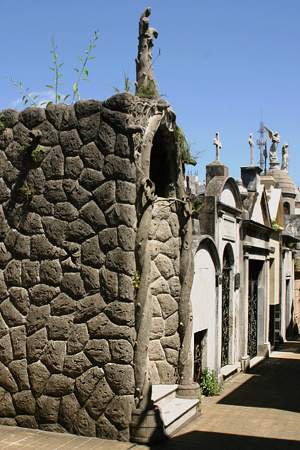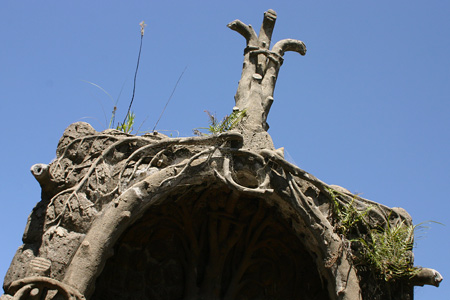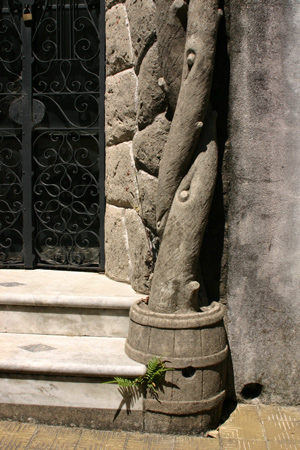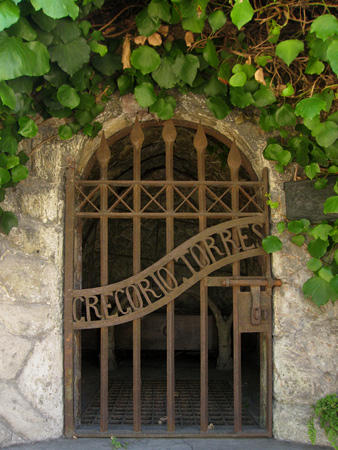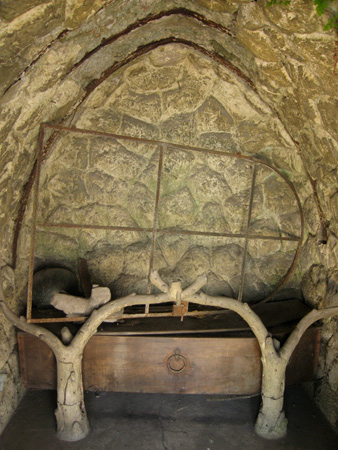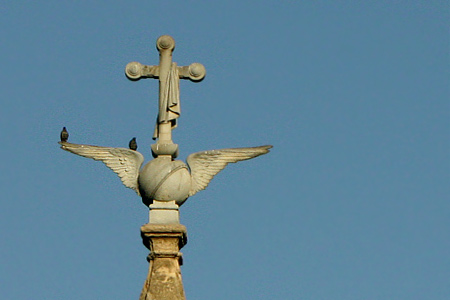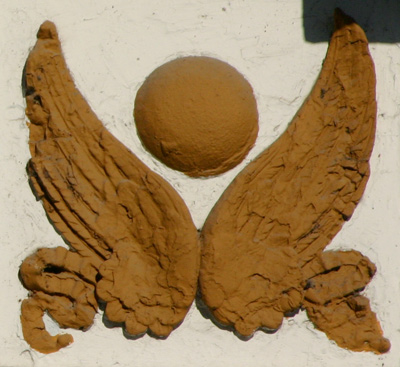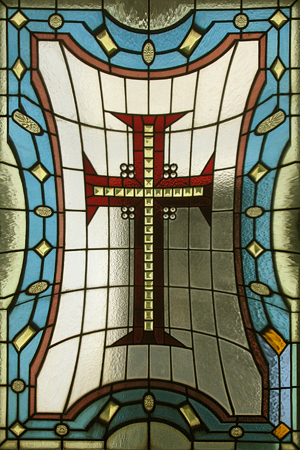Very little evidence is left from the original 1822 cemetery. As the first public burial spot in Buenos Aires, Recoleta Cemetery wasn’t dignified enough to house the remains of elite families in its early days. They continued to prefer burial in churches. Early cemetery residents were buried haphazardly since space was available, & no one seemed to care much about organization in the beginning.
After the 1881 overhaul by Torcuato de Alvear, the cemetery’s layout was ordered & improved. Many plots were relocated to make room for the neat rows of mausoleums visible today. As far as I know, there are only two exceptions to this rule… they don’t fit on the map.
The tomb of Gabriel Ocampo sits in the middle of an aisle near the entrance, almost blocking access:
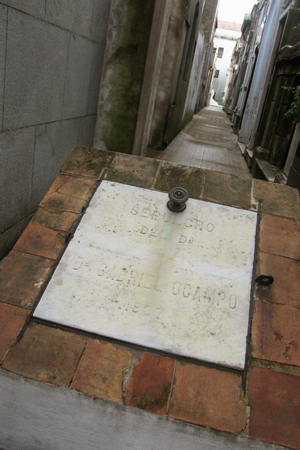
Many Irish Catholic immigrants still have their own tombstone from early days tucked in between modern mausoleums. But not Margaret Donoghoe. She was never moved & many people unknowingly walk over her cracked & worn tombstone:
